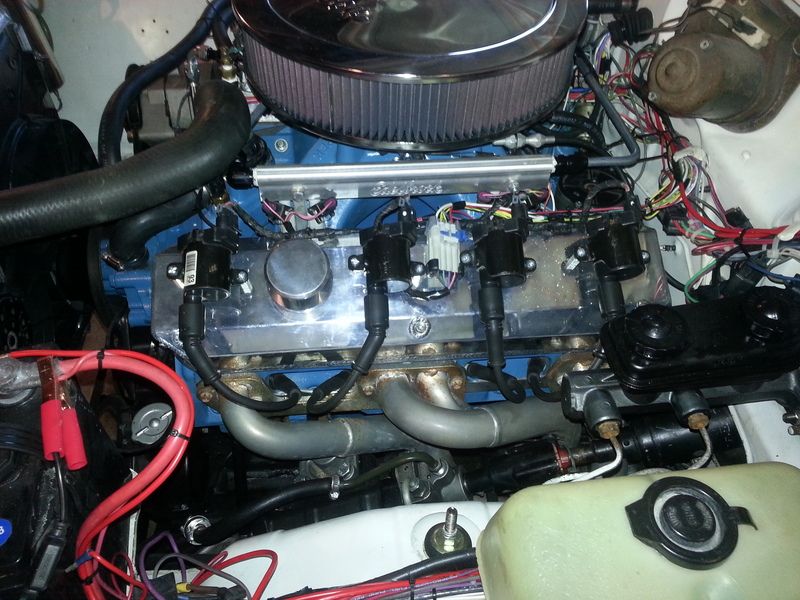Hello all,
I'm wanting to make some decisions about components for an ignition system in my 440 powered '68 Dart. The car came with a few parts so I have options. The system in the car is a factory magnetic P/U distributor with a gold box (?) and ballast resistor. The car came with a couple of non vacuum Uni-Lites as well but in my experiance these units are fragile so I think I'll verify that they work then sell them on eBay. The car also came with two Mallory # 685 boxes. These seem to have more features than a standard Hy-Fire VI an look like they've never been hooked up. My initial plan is to have the OE distributor recurved and run one of the Mallory boxes.
I've noticed that some of the late 70's Lean-burn distributors had no vacuum advance but did have dual magnetic pickups. Has any one used these in a performance application? In the future I'm tempted to try fuel injection with ignition control. Im not sure if the second pick-up is just retarded from the first or if it's placed to emulate a signal from the cam like Mallorys Dual-Sync units. Please share your coments and opinions on these items with me. Thanks for your time!
I'm wanting to make some decisions about components for an ignition system in my 440 powered '68 Dart. The car came with a few parts so I have options. The system in the car is a factory magnetic P/U distributor with a gold box (?) and ballast resistor. The car came with a couple of non vacuum Uni-Lites as well but in my experiance these units are fragile so I think I'll verify that they work then sell them on eBay. The car also came with two Mallory # 685 boxes. These seem to have more features than a standard Hy-Fire VI an look like they've never been hooked up. My initial plan is to have the OE distributor recurved and run one of the Mallory boxes.
I've noticed that some of the late 70's Lean-burn distributors had no vacuum advance but did have dual magnetic pickups. Has any one used these in a performance application? In the future I'm tempted to try fuel injection with ignition control. Im not sure if the second pick-up is just retarded from the first or if it's placed to emulate a signal from the cam like Mallorys Dual-Sync units. Please share your coments and opinions on these items with me. Thanks for your time!



















